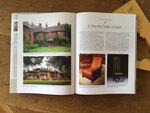We may receive a commission when you use our affiliate links. However, this does not impact our recommendations.
The first time I became aware of pocket screws I was standing in a Grizzly Industrial showroom handing out free magazines to a long line of customers – maybe 200 people. More than half of them were holding blue boxes.
Eventually I asked a customer what was the deal with the blue boxes. He replied: “It’s a Kreg jig, and now I can throw away my biscuit joiner.”
Pockets screws took over the world for awhile. And now the woodworking world has been separated into those who swear by them and those who swear about them. I’m actually in neither camp. I love my Kreg jig, but I don’t use it for building cabinets or doors.
Instead, I think it’s the most versatile clamping system I own.
Whenever I have something odd to clamp – think compound miters or weird corner cabinets – I reach for my Kreg jig. With the help of the cheapest Kreg jig (the Kreg Jig Mini) I can put a pocket almost anywhere. Then I drive a screw in, and I can get plenty of clamping pressure right where I need it.
Then, after the glue has dried, I’ll remove the screws in many cases. Not because I’m particularly cheap but because removing the metal screw allows me to drill through the joint in some cases.
And that’s when we come to chairs. Most chairmakers would laugh if I told them I used a Kreg jig while building stick chairs. But I do. When joining the parts of an armbow, I have to join curved parts at a really weird angle. The Kreg jig makes it easy.
Then I cover the pocket holes with the top part of the arm. Only a furniture restorer in the far future will know what I did.
This isn’t the only cheap clamping solution available. Tomorrow I’ll show you how I do this with pinch dogs.
— Christopher Schwarz
Here are some supplies and tools we find essential in our everyday work around the shop. We may receive a commission from sales referred by our links; however, we have carefully selected these products for their usefulness and quality.










